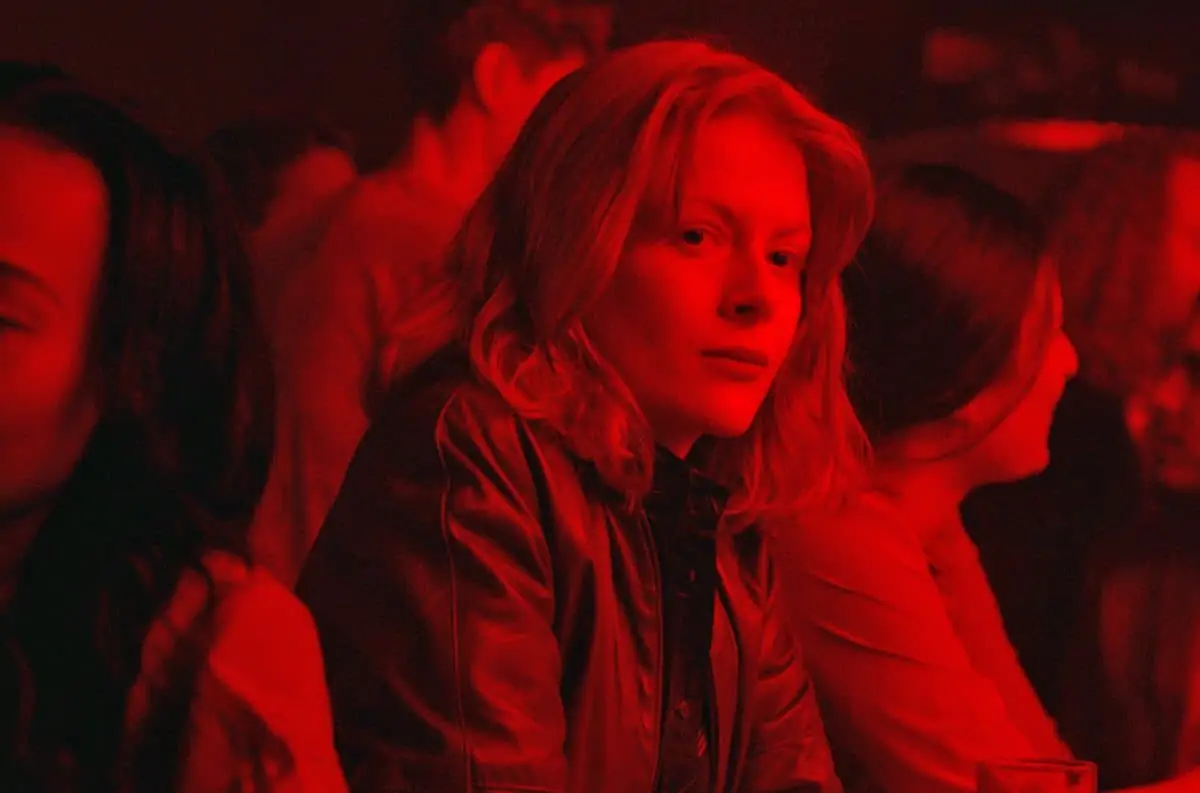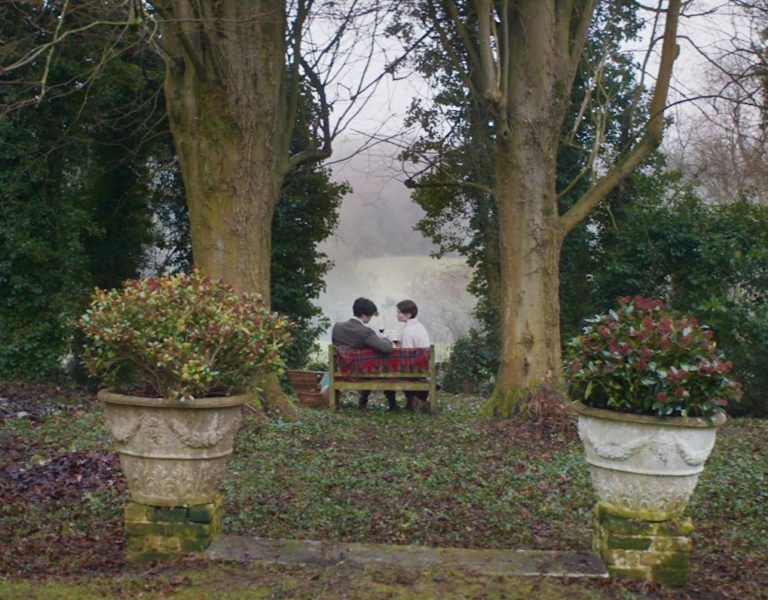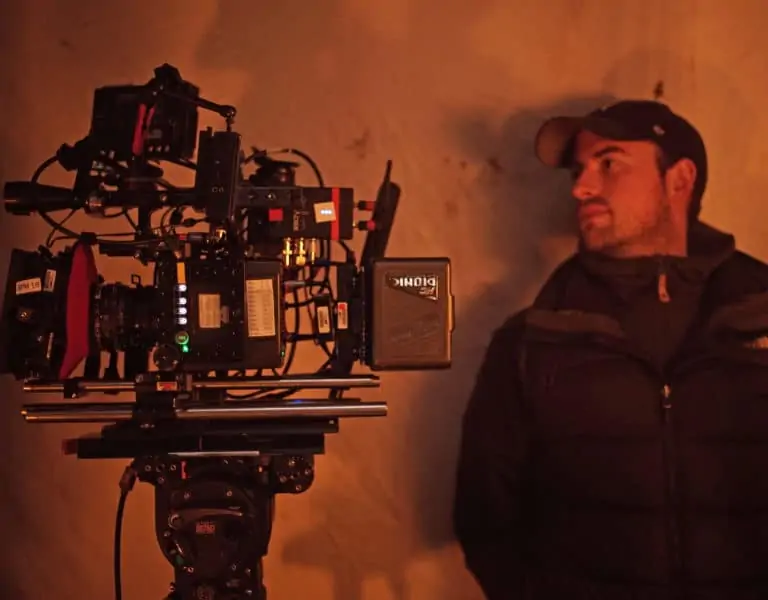Gearing up for success
A thoroughly Bristolian ode to bikes and boyhood, The Fence marks the feature debut of British filmmakers William Stone and Adam Pickford. The director-DP duo reveal how they transformed their award-winning short, inspired by Stone’s father, into a long-form triumph.
The history of Bristol’s Hartcliffe estate is punctured by hardship. Rising from the city’s southern suburbs in the social housing boom of the 1950s, Hartcliffe’s troubles reached a nadir in the 1990s with three infamous nights of rioting. But beyond the negative headlines and troubling government statistics is a community with plenty of interesting stories to be told.
One such tale lit the fuse for The Fence, the 2018 short film and 2022 feature written and directed by William Stone. Stone’s father grew up on the estate in the late 1970s and early ‘80s and would regale his son with his entertaining – and sometimes shocking – memories. “It was a very different world then, and I was fascinated by the way people interacted with each other,” Stone says. “No mobiles, no internet, and a much more tactile approach to dealing with issues. There seemed a greater sense of community and principles.”
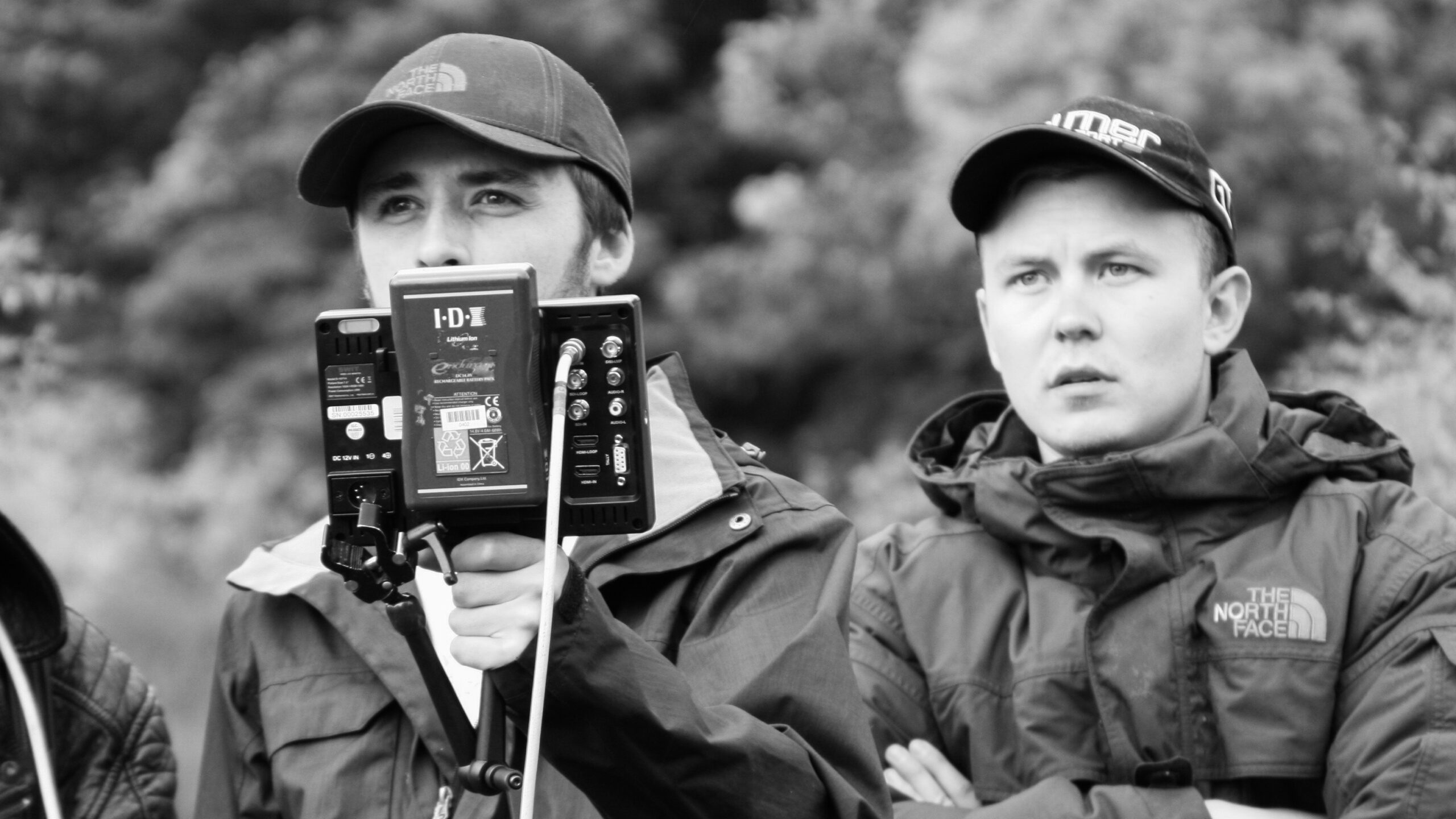
DP-director duo Adam Pickford (left) and William Stone
The Fence follows teenager Steve Knight after his brand-new motorbike is stolen from his driveway in Hartcliffe. With the help of friends from the estate and his rather disreputable older brother, he’s determined to track down his beloved ride.
To bring the Knight family’s story to life, Stone enlisted the help of his frequent collaborator, cinematographer Adam Pickford. The pair’s director-DP relationship began quite by chance at Bournemouth University where, after both taking a year out after school, they met on the Film Production and Cinematography course. “It wasn’t until the second year of our course that Adam and I started talking to each other, when we were put in the same group. At the end of that year, it was very clear to me that Adam was good at cinematography, and I really wanted to make things.”
“You’re always trying to connect with people that can initiate things,” adds Pickford. “There’s a lot of people that talk about wanting to do things, but few actually see an idea through to the bitter end.”
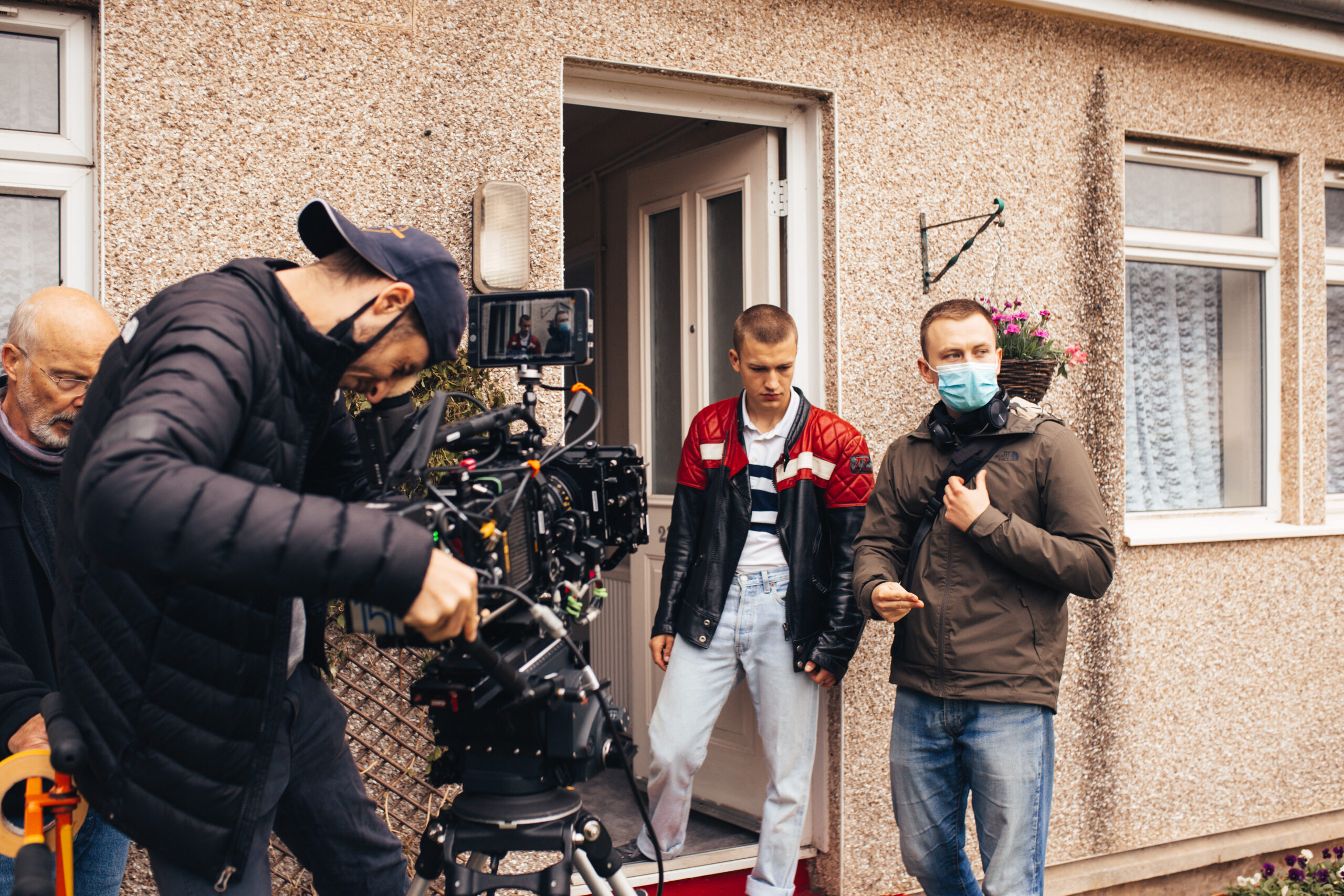
The Fence was Pickford (second-left) and Stone (right)’s first feature
This shared tenacity has seen them unite for six short films so far, including Watching You (The Manor), Fine By Me and, indeed, the 2018 version of The Fence which inspired the feature. The short has since earned 4.5 million YouTube views and its cinematography was honoured at that year’s Bill Vinten GTC (Guild of Television Camera Professionals) University Awards.
Being recognised by the awards was an inspiring experience, Pickford remembers. The GTC’s Alan Duxbury arranged some work experience for the winners, which in Pickford’s case meant helping DP Zac Nicholson BSC with prep for the film Red Joan at ARRI Rental. “There was always a feeling that making short films was a bit of a dead-end thing; it gets into one or two festivals, then fades out,” the cinematographer says, “but on this occasion it felt like it could actually lead to a career. Ultimately, the GTC Awards gave me and Will the drive to make more films and value short films as a calling card.”
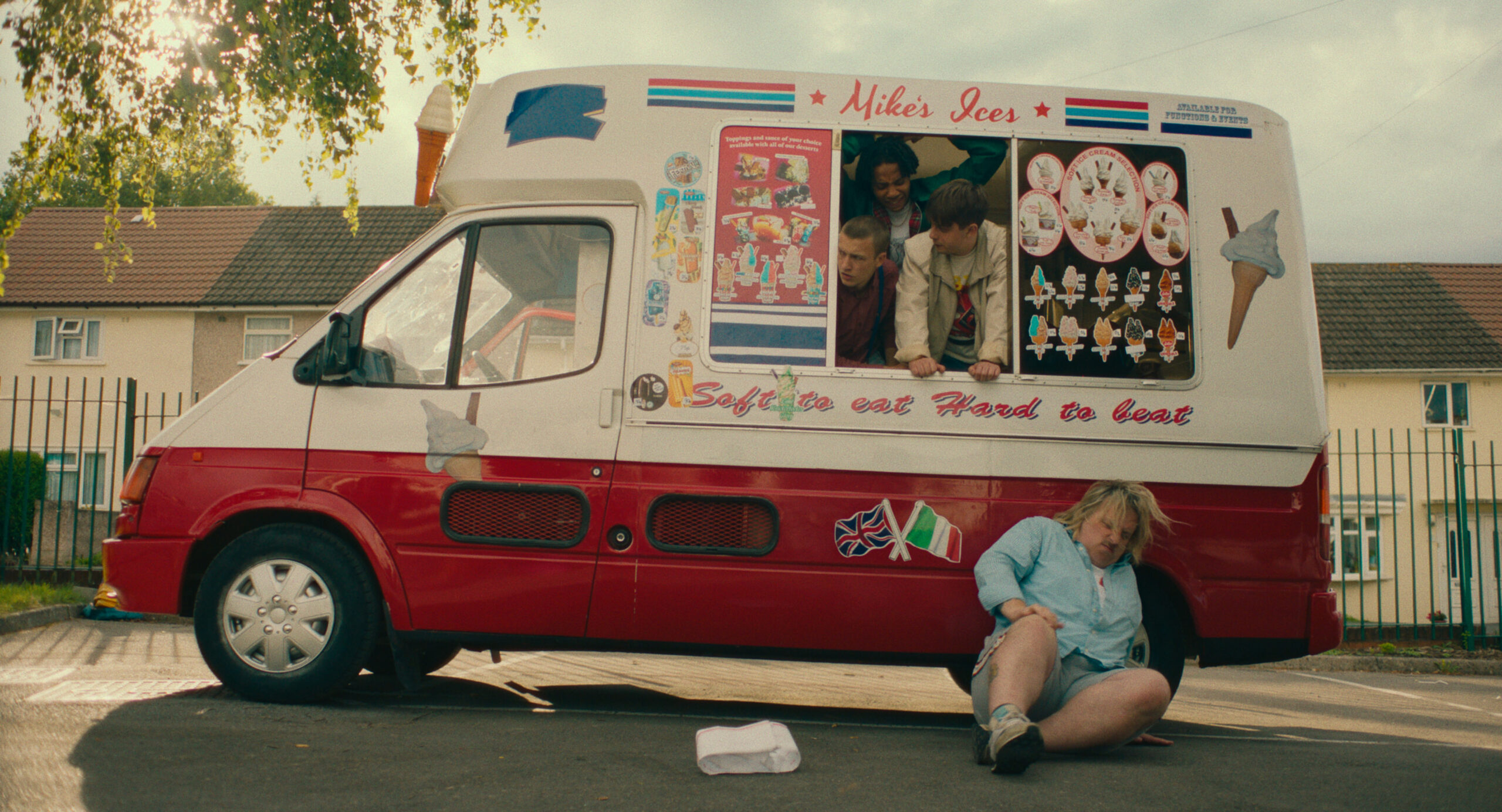
The Fence captures working-class Bristol life in the 1980s
Try and try again
Despite the short’s runaway success, the feature only saw the light of day after years of determination.
“I went out straightaway to a lot of production companies to see if they would be interested in helping me create a longer version or turn it into a series,” remembers Stone. “No-one was interested – either in the topic, or in me and Adam. So, I stuck it in a drawer.” Their attention turned to other projects until 2020, when they finally took the plunge on the production.
“The only thing that put us off was just how ambitious it was, in terms of the scale,” Pickford admits. “Not just it being a period piece, set in the 1980s, but the sheer number of locations and cast members you would need to match the pace of the original short.”
There were many elements of the short’s cinematography that Stone and Pickford wanted to retain for the feature, such as the use of dolly and Steadicam tracking shots. For the grade, however, they were keen to take a different approach. “We wanted the feature to be a lot more positive-feeling,” Pickford says. “We leant more towards humour than grit in the feature and it’s a lot poppier than the short in terms of colour.”
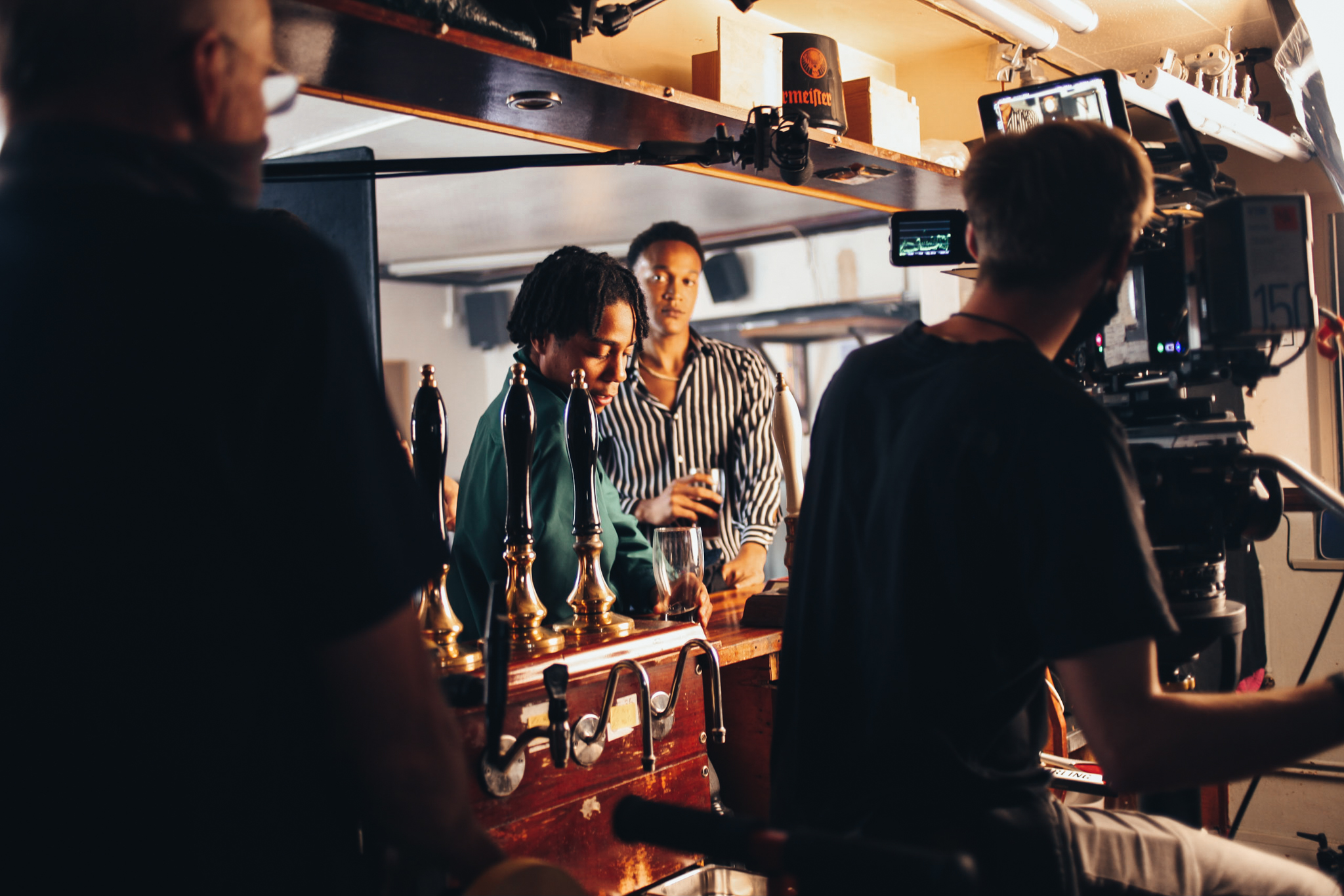
The film was shot on location in Bristol and the Cotswolds
The pair opted for a heightened reality approach to filming the Knight family. “I’ve always leant towards what people would call a more American style – it’s quite floaty and upbeat,” notes Stone. “Very rarely are you on the shoulder and getting that gritty realism, you’re on a Steadicam or on tracks and this is a deliberate choice.”
Bristol is as much a character as it is a location in The Fence. Most of the film was shot on location in the city, bar a foray to the Cotswolds for some exteriors. There’s a marked whiff of This Country, in film’s humour (indeed, the mockumentary’s patriarch Paul Cooper has a winning turn as local gangster Gibsy in The Fence). Stone also mentions that a lot of viewers compare it with This is England, although “tonally and stylistically, they’re apart.”
Helping to bring the 1980s back to Bristol was a stunning array of vintage bikes and cars. Stone spent a long time building relationships with vehicle owners by joining various clubs and going to meet-ups. “I’d chat to people who had certain bikes and cars, and would just get to know them and then approach them about putting them in the film,” he says. “Pretty much every bike and vehicle was provided for free by collectors who really liked the project and loved those items.”

Sally Phillips plays the matriarch of the Knight family
Gloss and grit
The Fence was captured on the ARRI Alexa Mini, with principal photography spanning August and September 2021. The Sony Venice had also been mooted as a contender due to its night-time shooting benefits, but when Pickford and Stone were comparing the results of the two cameras, they felt the Alexa provided a glossier image.
The Alexa was paired with Cooke S4s, which fought off competition from Leica Summicrons. “The Cookes were really nice,” says Pickford. “They had this three-dimensional feel which was good for faces – and there’s an awful lot of faces in this film.”
While studying at Bournemouth, the duo had done a lot of shooting on film and although it would have been the dream situation to bring that expertise to The Fence, it was unfortunately not a budgetary possibility. So, it was a challenge for the team to see how they could recreate that filmic look digitally.

Relive the buzz of biking in the film
“One of the debates prior to shooting was, do you want to bake in the look when we’re shooting, or do we want to capture the cleanest image then rough it up in post?” Stone says. “I think the Venice was more about capturing more of a blank canvas, whereas the ARRI was going to give us a bit of character. Elliot Gilfoyle at Cinewest, who supplied our camera kit, really helped us explore and find the right tool for the job.”
“What we were going for was a 35mm, three-perf, spherical, 1.85 look,” Pickford adds, “so it was just about getting the digital camera to get us as close as possible to that.”
Cinelab’s head of grading, Paul Dean, brought his skills to the grade. “His background is in film, so it was a good match for what we were trying to achieve in terms of bringing a more traditional look and feel to the film. It was a good combination, and I certainly learned a lot from him,” says Pickford.
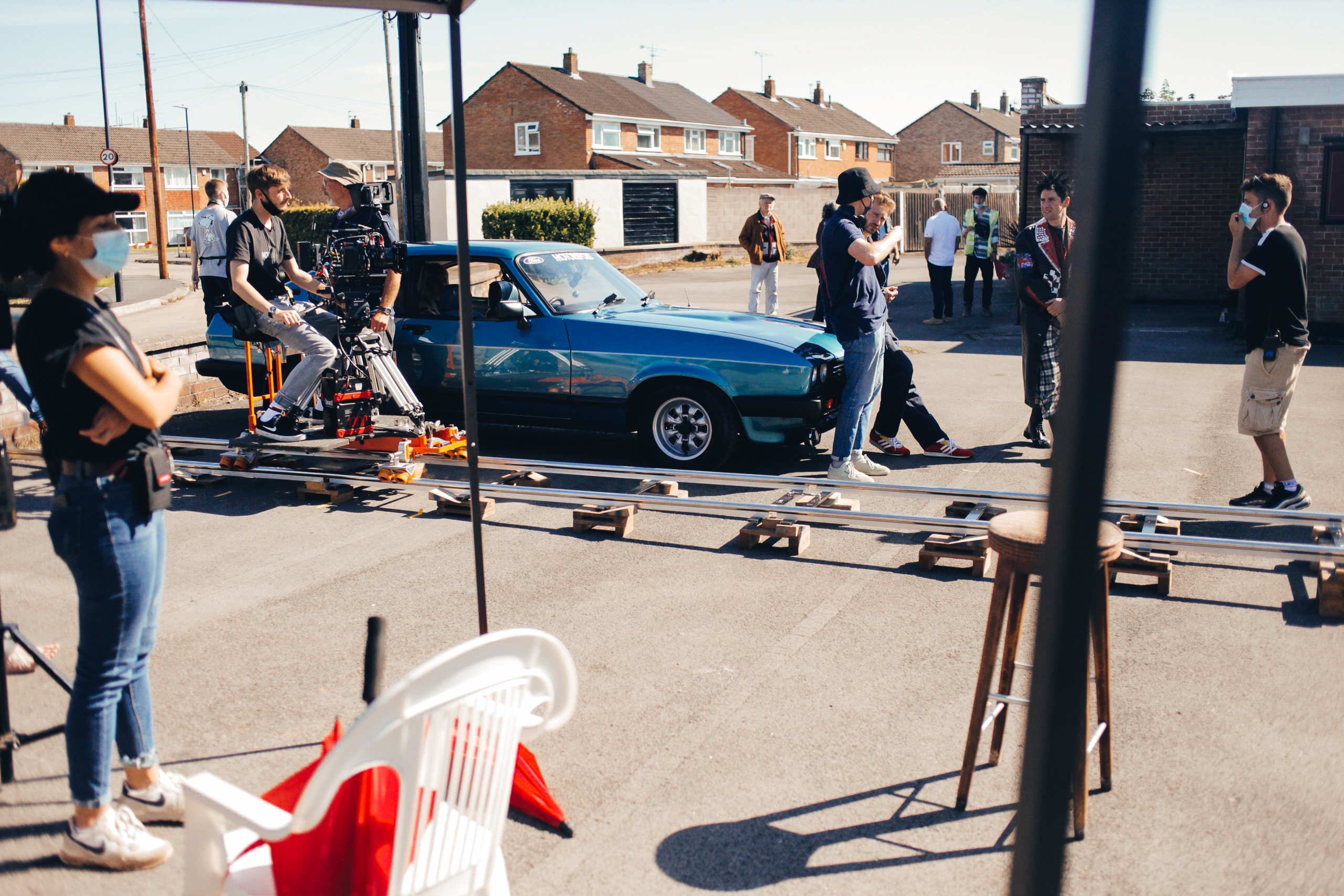
Shooting an exterior scene outside the pub
Fantastic Fresnels
The stars of Pickford’s lighting toolkit, which also included an ARRI SkyPanel and some Astera tubes, were three old 5K tungsten Fresnels. The DP says these proved invaluable for covering both large and small spaces. “Originally I was bouncing them into frames to light areas but eventually started putting them really far away and directly hitting the actors with them,” he recalls. “I remember front lighting a close-up of Steve at one point with a 5K direct. It was nice how the light was broken up over a long distance by various bits of foliage creating really striking shapes across his face. It added to this heightened, old-school, slightly Hollywood feel we were after.”
Shooting the night-time exteriors were some of the most challenging parts of the film for Pickford; after all, it was his first time lighting a night scene of that scale. He remembers one of the penultimate scenes in the film, which involved a fight and a stuntman falling backwards from a bike. During prep, it helped Pickford to visit the location at night and sit there by himself for hours at a time to theorise the lighting and notice any potential issues: “It had to be done in one night and to save time I didn’t want to be moving lights around too much once they were set. We had two cameras to get the most from the stunt and keep things moving quicker. We also decided to go handheld to respond to the aggressive action.
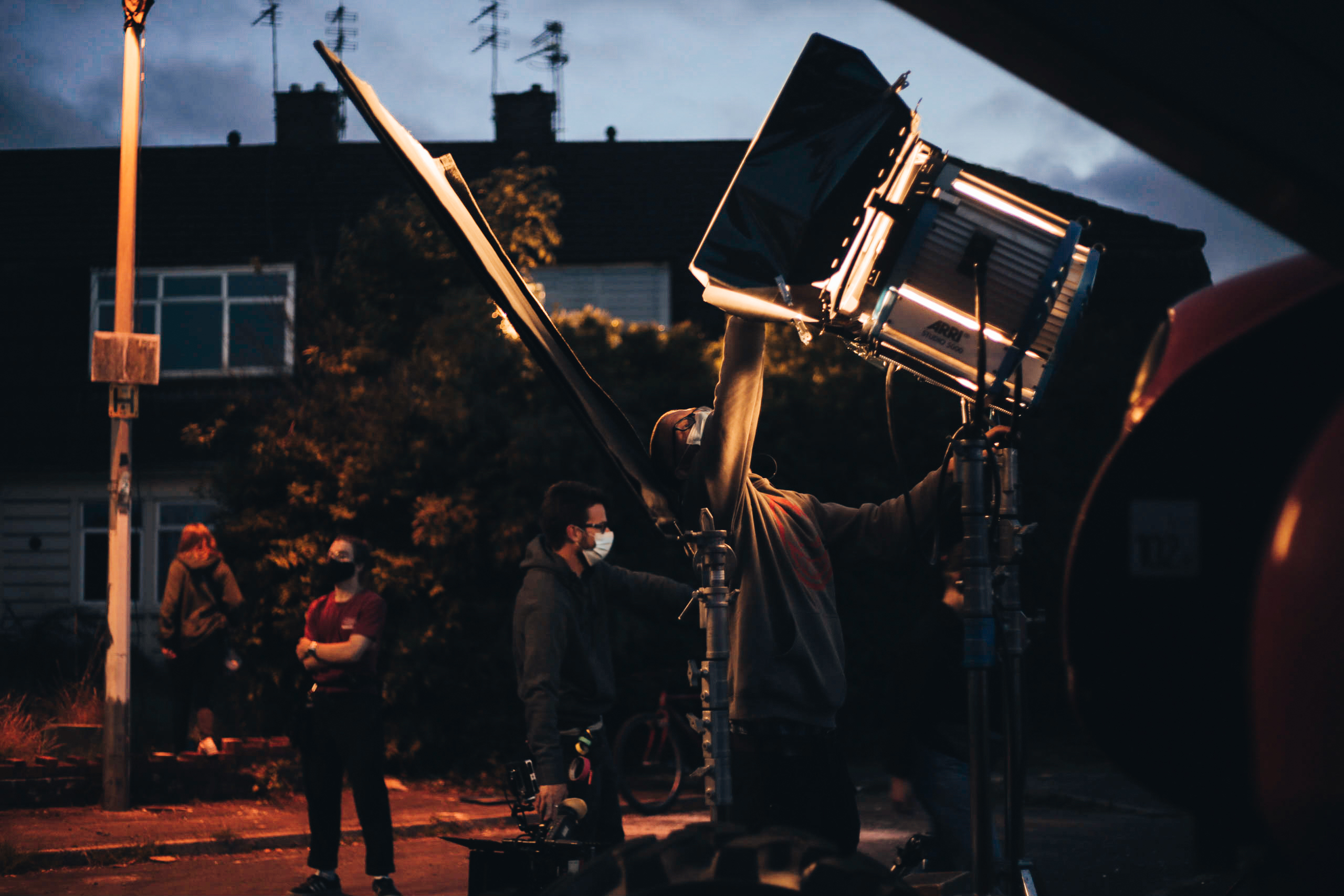
Pickford worked closely with gaffer Bertil Mulvad
“I needed 180 degrees of background to cover all the blocking Will and I had done, plus allow room for the stunt team to work and enable us to get low-angle wide shots. So, I needed to hide all the lights behind buildings and down alleyways.
“I had Aputure 300ds rigged to lampposts (originally planned with tungsten lamps but the bulbs wouldn’t last) with urban sodium gels so I had good motivation for top light; however, most of the action took place in the middle of the road away from the lamp posts. To fill the gap, I used an 8×8 frame rigged to a cherry picker boomed in above the action with two 5K tungsten Fresnels bouncing into it to give the whole space a general wash and dramatically edge Steve and Andy.
“For tighter shots I used some poly board and muslin sheets on the ground and a 650 bouncing it. The 8×8 top light was gelled half with HI sodium and half with plus green for an ugly yellow mix that gave some variation to the dense orange urban sodium from the 300ds. The rest of the background had various hidden 2K blondes, juniors and 5Ks lighting alleyways trees and buildings. It was a real collaboration with my gaffer, Bertil Mulvad, who was very open to my more ambitious ideas and helped me feel at ease on what was my first real night shooting experience.”
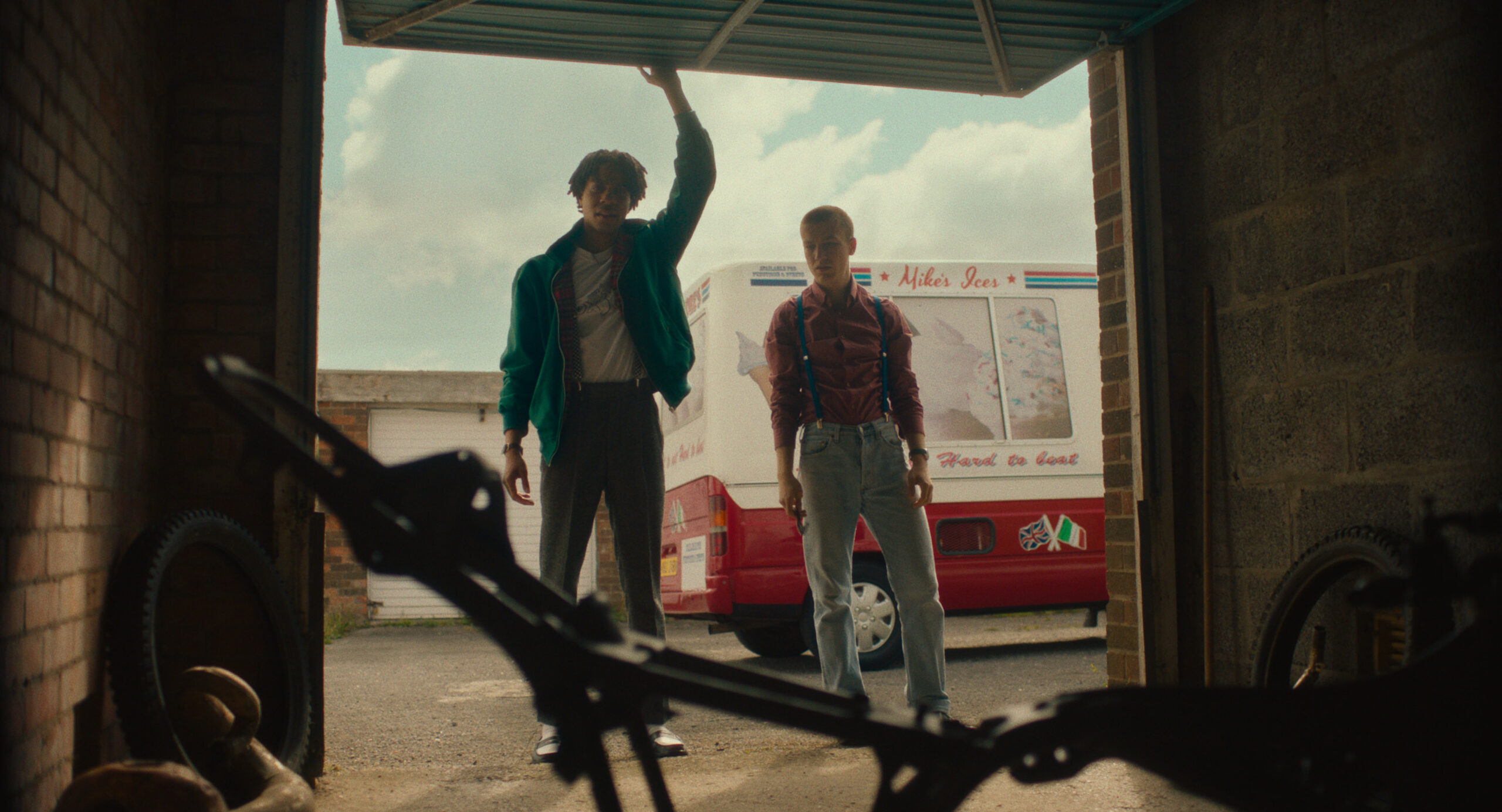
The film premiered in Bristol in September 2022
The Fence premiered on 2 September and had a theatrical run of seven weeks with Showcase cinemas. It has since been longlisted in two categories at the British Independent Film Awards. That said, one of the people that the filmmakers must most like to impress is the man who inspired it all – Stone’s dad. How did he respond to seeing the finished project?
“I think it was overwhelming for him because he really didn’t talk about it much at the premiere,” his son remembers. “The film touched on darker material that I think he probably wasn’t expecting me to use, and it was all a bit raw for him on that first viewing. But I know he was very proud, just a little overwhelmed by it all at first.
“Afterwards he kept seeing it in cinemas because he said he needed more viewings to separate the film from the production. He was involved in the filming and was obviously aware of the project for many years, so it took time for him to see the film for what it was rather than ‘this massive project that his son had been working on’. But once that separation happened, he thoroughly enjoyed it and was able to get lost in the story and all the nostalgia, he’s probably watched it about five times now. I keep telling him to stop going to the cinema because I can just show him at home, but it doesn’t stop him!”
The Fence will be showing at Bristol’s Scott Cinema on 7 and 10 November, and there will be Q&As at Watershed on 8 November and The Cube on 22 November. It will be available for rental and purchase online from 28 November. Keep an eye on www.thefencefilm.co.uk for more information and updates.

